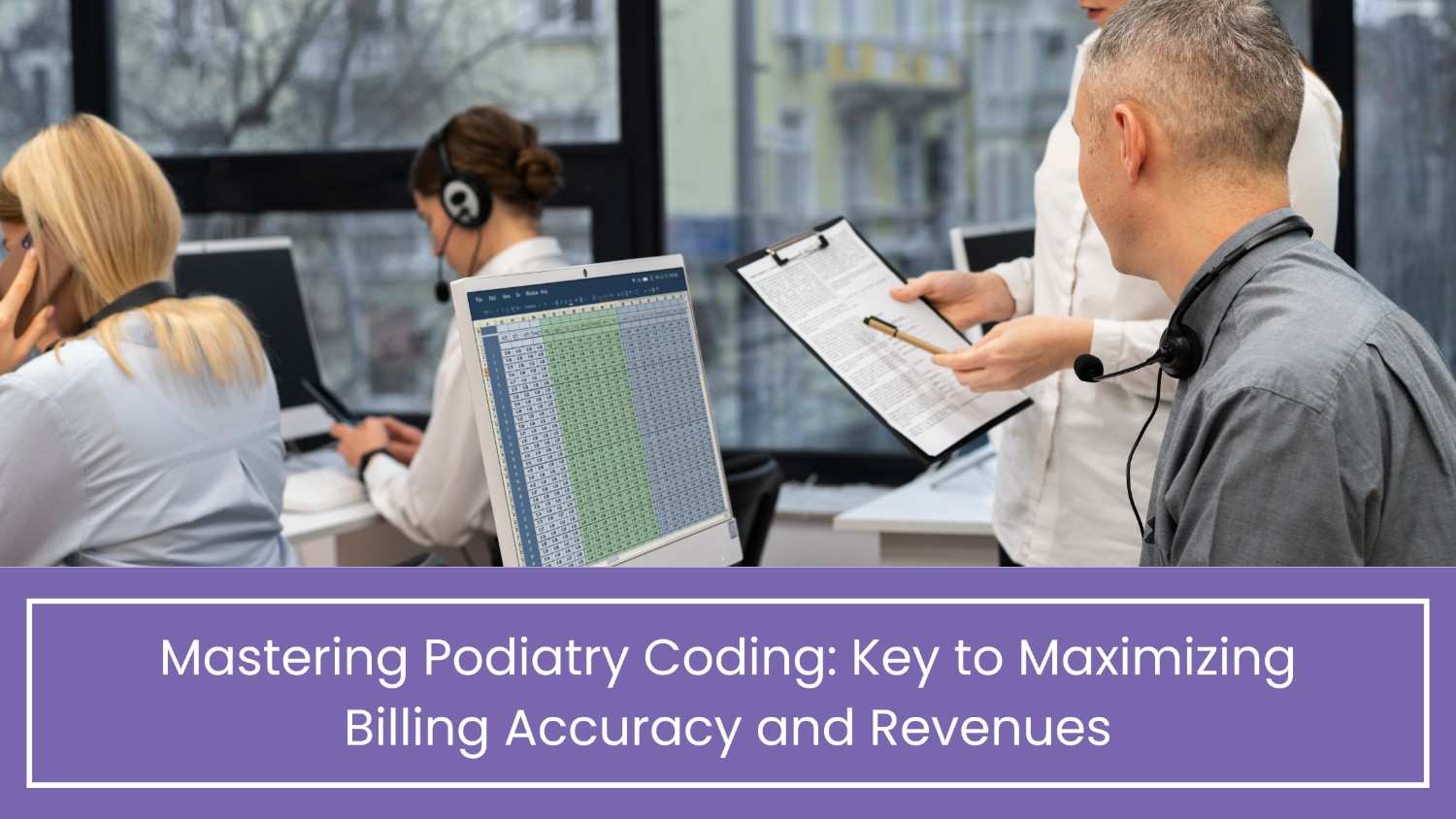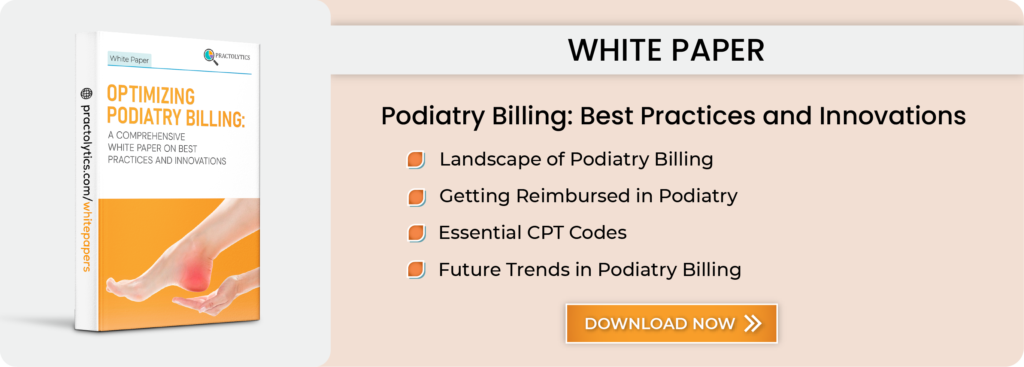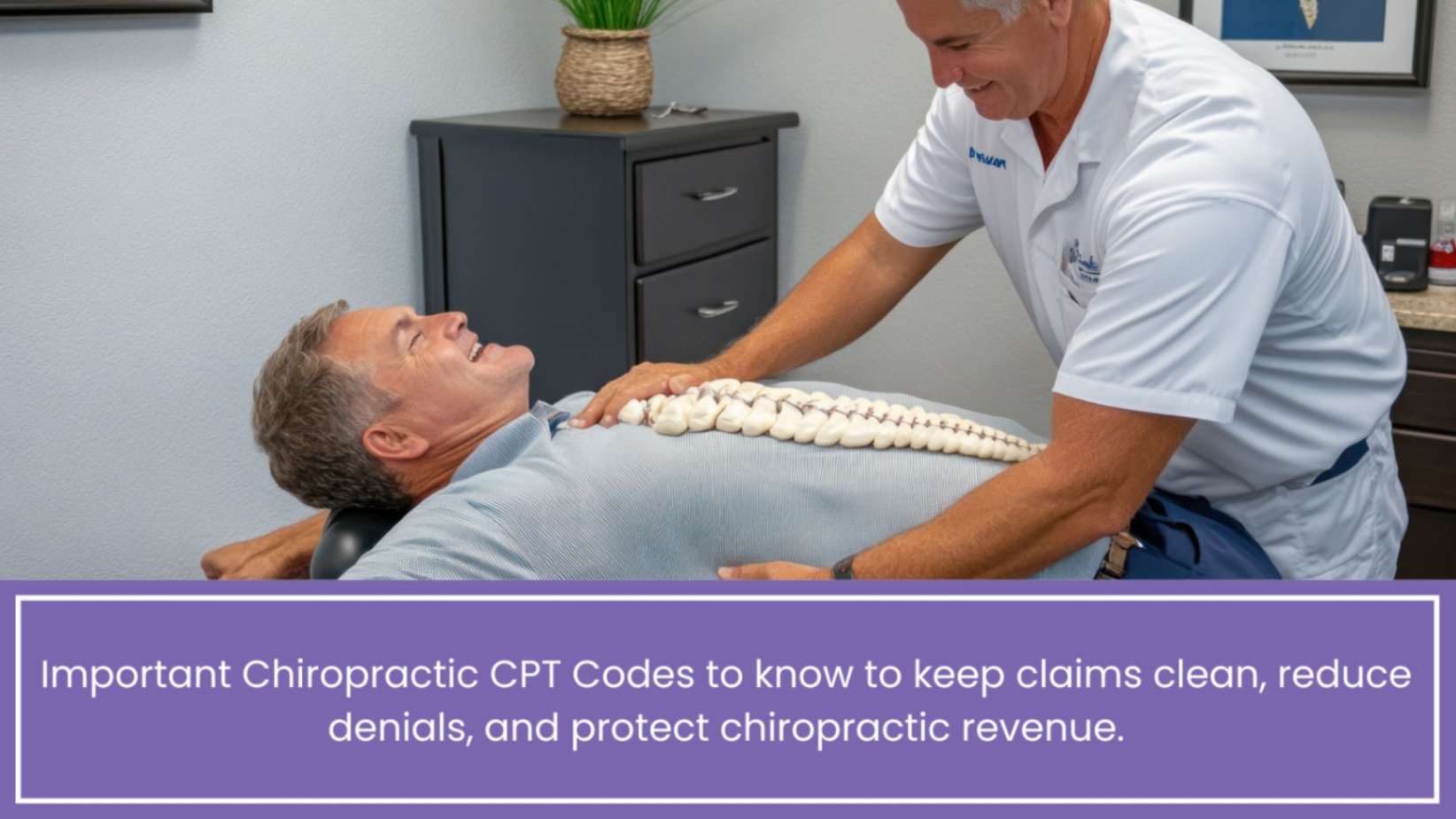Mastering Podiatry Coding: Key to Maximizing Billing Accuracy and Revenues
In healthcare, accurate billing is paramount for the financial health of medical practices and the overall success of healthcare professionals. One often overlooked aspect of this intricate process is podiatry coding – a specialized branch of medical coding that plays a pivotal role in ensuring precise reimbursement for podiatric services.
Podiatry, a medical specialty focusing on analyzing, diagnosing, and treating foot and ankle disorders, requires meticulous attention to detail. As healthcare professionals strive to provide top-notch care to patients, it is equally crucial to navigate the complex web of medical coding accurately. This blog looks into the indispensable role of podiatry coding in achieving precise billing, shedding light on its significance, challenges faced, and the evolving landscape in coding practices.
Table of Contents
Understanding the Significance of Podiatry Coding
Podiatry coding is the systematic translation of medical procedures, diagnoses, and services into universal alphanumeric codes. These codes are crucial for communication between healthcare providers, insurance companies, as well as government agencies, resulting in accurate podiatry billing and reimbursement processes. The unique nature of the foot and ankle-related services, which may differ considerably from other medical specialties, makes coding even more important in the specialized field of podiatry.
Accurate coding ensures that the services provided by podiatrists are correctly documented and categorized, allowing for transparent communication across the healthcare continuum. This precision is vital not only for podiatry billing purposes but also for statistical analysis, research, and quality improvement initiatives within the field of podiatry. A well-established coding system enables healthcare professionals to track trends, assess patient outcomes, and contribute valuable data to the broader healthcare landscape.
Challenges in Podiatry Coding
While the importance of podiatry coding is undeniable, it is not without its challenges. The nuances and intricacies involved in coding for foot and ankle conditions require a comprehensive understanding of podiatric medicine, anatomy, and terminology. Additionally, frequent updates to coding systems, such as the podiatry CPT- Current Procedural Terminology and the International Classification of Diseases (ICD), pose a continuous challenge for podiatrists and their coding teams.
One common challenge in podiatry coding is the specificity required for the accurate representation of services. Foot-related procedures often involve a multitude of factors, such as the location, type, and extent of the intervention, which must be precisely coded to reflect the complexity of the service provided. Failing to capture these details can lead to undercoding or overcoding, both of which have significant financial implications for medical practices.
Also, the integration of technology into medical care has introduced EHRs- Electronic Health Records as well as coding software, with the goal of streamlining the coding process. While these tools offer efficiency, they also bring about the need for continuous education and training for healthcare professionals to adapt to the evolving coding landscape effectively.
Evolving Landscape of Podiatry Coding Practices
In recent years, the field of podiatry coding has witnessed notable changes in response to advancements in healthcare policies, technology, and the increasing demand for accurate and transparent podiatry medical billing. One notable advancement is the transition from the International Classification of Diseases, Ninth Edition (ICD-9) to the ICD-10, which has a more comprehensive and detailed coding system.
The adoption of ICD-10 has significantly expanded the coding options available for podiatric conditions, allowing for greater specificity and accuracy in coding. This transition, while initially challenging for healthcare professionals, has ultimately contributed to improved documentation and a more robust coding infrastructure. The enhanced detail of coding options allows podiatrists to accurately record the unique aspects of foot and ankle conditions, minimizing the likelihood of podiatry medical billing and coding errors and improving overall healthcare data quality.
Furthermore, the incorporation of AI- Artificial Intelligence and machine learning into coding operations has paved the way for more effective and precise coding practices. Automated coding tools leverage algorithms to analyze clinical documentation, identify relevant codes, and assist healthcare professionals in assigning appropriate codes to podiatric services. This not only expedites the podiatry medical coding process but also minimizes the risk of human error, further contributing to the accuracy of podiatry billing processes.
Best Practices in Podiatry Coding for Accurate Billing
Achieving accuracy in podiatry billing and coding requires a combination of expertise, diligence, and adherence to best practices. Healthcare professionals and coding teams can enhance their podiatry medical coding processes by implementing the following strategies:
- Continuous Education and Training:
Staying abreast of updates in coding systems, regulations, and guidelines is essential for accurate coding. Regular training sessions for podiatrists and coding staff ensure a comprehensive understanding of coding changes and promote a culture of continuous learning within the practice.
- Specialized Coding Certifications:
Encouraging coding staff to obtain specialized certifications in podiatry coding can significantly enhance their expertise. Certifications such as Certified Professional Coder (CPC) with a focus on podiatry equip coders with the specific knowledge and skills needed for accurate coding in this specialty.
- Effective Documentation Practices:
Thorough and detailed clinical documentation is the foundation of accurate coding. Podiatrists should adopt best practices in documenting patient encounters, ensuring that all relevant information, such as the type and location of procedures, is clearly recorded. Clear and precise documentation not only supports accurate coding but also contributes to improved patient care and communication.
- Utilization of Coding Software:
Leveraging advanced coding software and EHR systems tailored for podiatry can streamline the coding process and reduce the likelihood of errors. These tools often include built-in coding assistance features, such as code suggestions and alerts for potential documentation gaps, enhancing the overall accuracy of podiatry medical coding.
- Regular Audits and Quality Assurance:
Implementing regular internal evaluations of coding practices assists in identifying areas for improvement and guaranteeing regular compliance with coding standards. Establishing a strong quality assurance system within the practice builds a culture of accountability as well as coding excellence.
- Collaboration Between Coders and Clinicians:
Open communication and collaboration between podiatrists and coding staff are crucial for accurate coding. Clinicians should actively engage with coders to provide additional context when needed and address any questions related to documentation, ensuring a collaborative approach to achieving accurate coding outcomes.
In conclusion, the role of podiatry coding in achieving accurate podiatry medical billing for medical practices and healthcare professionals cannot be overstated. The precision and specificity required in coding for foot and ankle conditions demand a thorough understanding of podiatric medicine, continuous education, and adherence to best practices. As the healthcare landscape evolves with technological advancements and coding system updates, it is important for podiatrists and coding teams to stay informed and embrace innovative tools that enhance the accuracy and efficiency of coding processes.
By recognizing the challenges, adopting best practices, and leveraging emerging technologies, healthcare practices can navigate the complexities of podiatry coding with confidence. Ultimately, accurate coding not only ensures fair reimbursement for services rendered but also contributes to the overall integrity of healthcare data, supporting advancements in research, quality improvement, and the delivery of high-quality podiatric care.
Practolytics, as a leading Revenue Cycle Management (RCM) service provider, is dedicated to supporting podiatric practices with comprehensive Podiatry Billing and Coding Services. Our expert team ensures seamless billing processes, leveraging advanced technologies to enhance accuracy and efficiency. Trust Practolytics to optimize your revenue cycle, allowing you to focus on delivering exceptional podiatric care!
ALSO READ – Trends and Issues in Medical Coding Auditing in 2024
Talk to Medical Billing Expert Today — Get a Free Demo Now!






